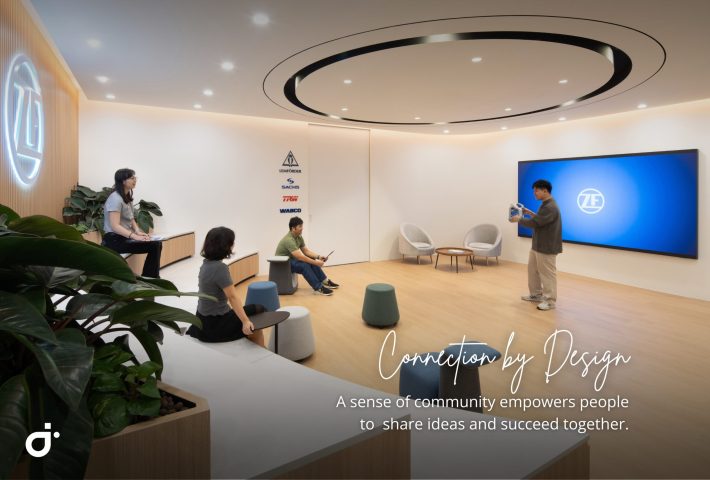Designing for Connection: Why Community is the New Cornerstone of the Workplace
September 25, 2025
In today’s rapidly changing work environment, one truth remains constant. People need connection. The sense of belonging that comes from being part of a community is essential to individual wellbeing and collective success.
This need is not new. Throughout history, humans have relied on their relationships with others for support, safety, and a sense of purpose. In the modern world, the workplace has become one of the most important spaces where these bonds are formed and nurtured.
The importance of community is now recognized globally. The World Health Organization recently identified loneliness as a public health concern, emphasizing that the absence of meaningful connection can have serious consequences. This makes the role of the workplace more important than ever.
Workplace as a Modern Village
Although we no longer live in small tribes or gather around campfires, the desire to be part of a community remains deeply ingrained in us. Today, that sense of community is often built within our workplaces.
When people feel a genuine sense of belonging at work, they tend to be more motivated, more engaged, and more committed to shared goals. Strong relationships within teams create a foundation of trust and support that allows individuals to thrive.
This sense of community does not happen by accident. It must be cultivated through intentional design and culture. That is where the workplace environment plays a critical role.
Design as a Foundation for Connection
At ID Integrated, we believe that design is one of the most powerful tools for building connection. The way a workplace is planned and executed can either support or hinder the way people interact.
Spaces that encourage natural movement, chance encounters, and shared moments are essential. Open collaboration zones, relaxed breakout areas, and thoughtfully placed amenities all help people connect without forcing interaction. These everyday encounters often spark the strongest relationships and the most creative conversations.
Design should also support emotional comfort. Elements such as lighting, acoustics, textures, and layout all influence how people feel in a space. A calm environment invites focus. A warm communal area invites conversation. Together, these elements create a workplace that is both productive and people-centered.
Connection Creates Resilience
In a world where change is constant, employees can easily feel overwhelmed. Shifts in leadership, new technologies, or evolving business goals can lead to uncertainty and fatigue.
A strong community within the workplace provides a sense of stability. When people feel supported by their peers and confident in their environment, they are better equipped to manage change. They respond with curiosity instead of fear, and with teamwork instead of isolation.
Connection helps people feel anchored even when everything around them is evolving.
Spaces Designed for People First
Designing for connection means creating environments where people are encouraged to engage, listen, and collaborate. It is about designing not just for function, but for feeling. A workplace should invite people in, make them feel welcome, and support their personal and professional growth.
At ID Integrated, we understand that great design is not only about materials or layouts. It is about people. We focus on creating spaces where connection happens naturally, where culture is felt in every corner, and where employees feel proud to be part of something larger than themselves.
Final Reflection
Community is no longer a secondary benefit of the workplace. It is at the very heart of what makes a company strong. Through thoughtful, people-focused design, we can build workplaces that are more than just places to work. They become spaces where connection thrives, where people grow together, and where culture becomes a shared experience.



